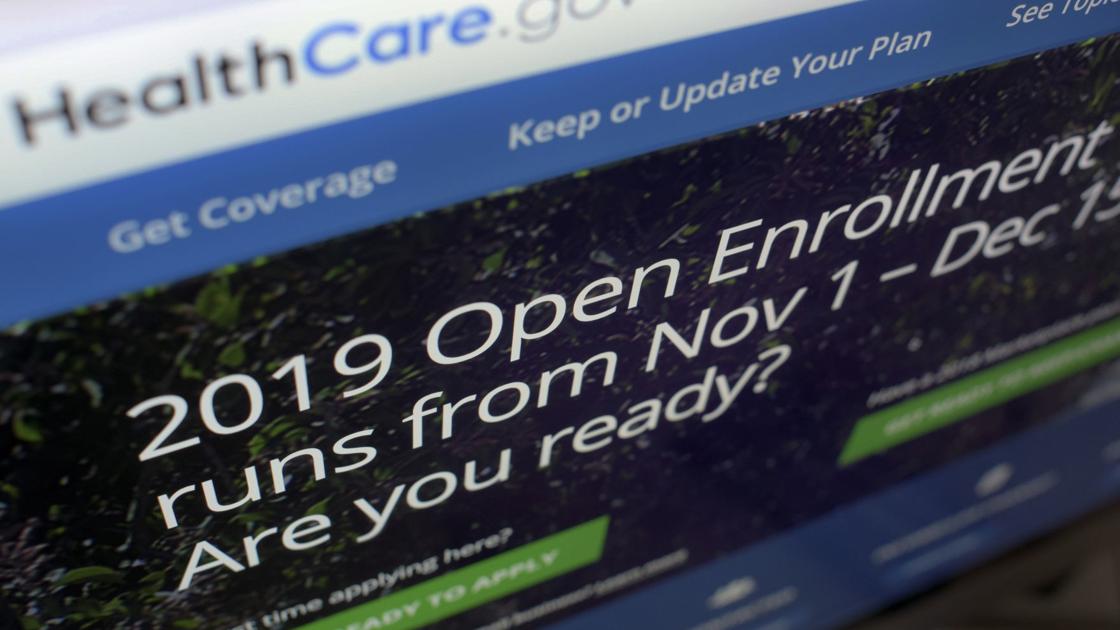2 weeks left to enroll in health insurance on the Affordable Care Act exchange in Montana - Helena Independent Record

The three Montana insurers that sell on the federal exchange here say enrollment has been strong so far despite cuts to advertise the program and help people navigate sign up.
Enrollment started Nov. 2 and ends Dec. 15. The period used to last three months but was shortened by the Trump administration to 45 days in 2017.
Four weeks into the six-week period, Montana enrollments are slightly down from last year, when 13,926 people had enrolled. Nationally numbers are also down a bit: 500,437 this year versus 504,181 in 2017.
Less time to sign up for coverage is just one of the changes made at the federal level that could lead to fewer people enrolling in 2018. Earlier this year, Republicans in Congress eliminated the tax penalty for those who did not carry coverage, essentially doing away with the individual mandate.
The Trump administration also finalized a rule that extended the duration of short-term insurance plans for up to a year, creating another option that in some, but not all, cases might cost less than plans sold on the exchange. The short-term plans do not require coverage of pre-existing conditions.
The Trump administration also cut funding to advertise the enrollment period by 90 percent and greatly reduced money for a program that helps people navigate buying a plan on the exchange, leaving Montana without a provider.
“Time will tell what some of the policies that are meant to either drive enrollment or curtail enrollment will do to the marketplace,” said John Doran, vice president of external affairs and chief of staff at Blue Cross and Blue Shield of Montana, one of three companies that sell on the exchange.
Blue Cross, along with the Montana Health Co-op and PacificSource, have all done their own advertising to help reach Montanans who might not otherwise know about the enrollment period.
Both the Co-op and PacificSource have increased their advertising efforts, while Blue Cross has stayed consistent with years past by running television and digital ads.
“This year because of the short window and the (midterm) election taking up the first couple weeks of November, we are actively getting out and trying to reach consumers with radio and TV ads,” said Co-Op CEO Richard Miltenberger.
The insurance companies generally didn’t think the change to the individual mandate would affect overall enrollment. Polling from Kaiser shows they might be right not to worry. Just 31 percent of Americans were aware Congress did away with the mandate. About four in 10 people wrongly thought Congress had not gotten rid of the penalty.
Doran said since the exchange started in 2013 consumers have come to value the importance of health care and want to continue coverage despite no longer facing a penalty.
“In general we are seeing a lot of activity and enrollment is high,” Doran said. “I think that speaks volumes to the fact that consumers know how important it is to have health insurance.”
Short-term insurance plans, which are not required to cover the 10 essential benefits of plans sold on the exchange, can deny coverage for pre-existing conditions. They are also available to consumers this year.
Kaiser found only a fifth of people under the age of 65 said they would purchase a short-term insurance plan if they had other options. About 70 percent said they would either keep their current plan or continue going without coverage.
While the plans, which last up to a year, might appear less expensive, they could cost more for some lower-income people who qualify for subsidies on the exchange to offset their premium costs, said Todd Lovshin, vice president and Montana regional director for PacificSource.
“My advice is to really look at what a plan covers and what it doesn’t cover,” Lovshin said. “Make your decision based on that.”
While no organizations in Montana applied for federal funding to serve as navigators for people signing up for coverage, Olivia Riutta, the outreach and engagement manager for the Montana Primary Care Association, said there are still local options for help.
The state Commissioner of Securities and Insurance office also has a website, https://montanahealthanswers.com, that provides Montanans with guidance for getting health insurance.
Ruitta said she always encourages people to get help with coverage locally because that same person can help people figure out how to best use their coverage down the road.
For 2019 coverage starting Jan. 1, the Co-op submitted an average premium increase of 10 percent, while PacificSource submitted an increase of 6 percent. Blue Cross did not increase its rates.
Last year the Co-op covered the most people on the exchange in Montana, about 22,700. Blue Cross insured 18,900 and PacificSource had 12,400.
https://ift.tt/2Ro1V0W


Comments
Post a Comment